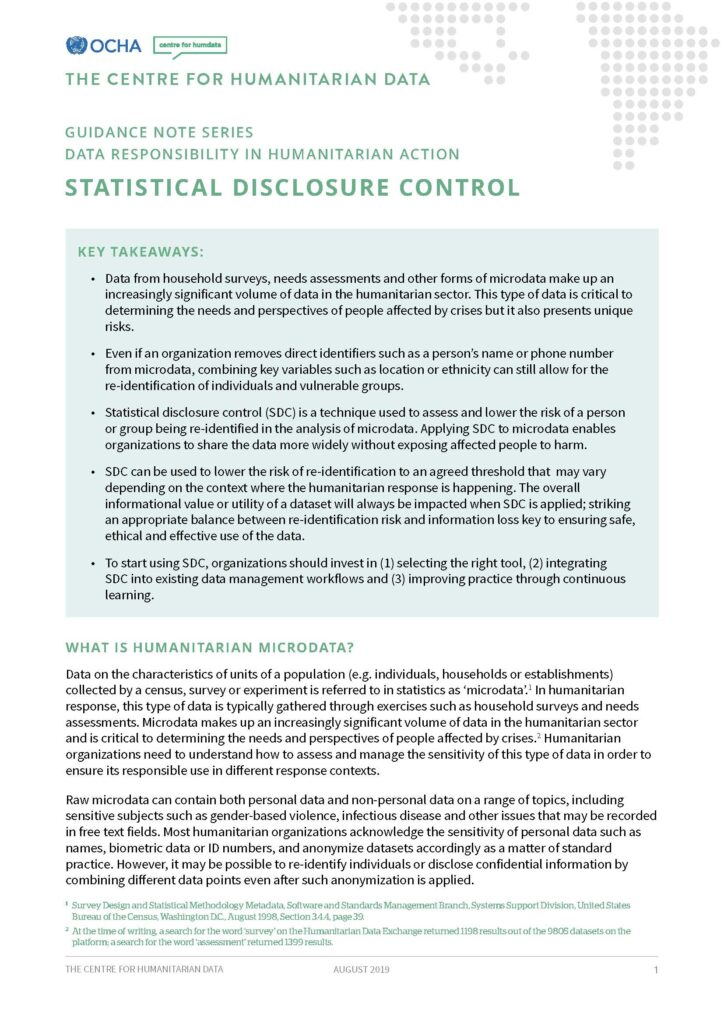Share
This Guidance Note is also available in Arabic, French and Spanish.
Survey and needs assessment data, or what is known as ‘microdata’, is essential for providing adequate response to crisis-affected people. However, collecting this information does present risks. Even as great effort is taken to remove unique identifiers such as names and phone numbers from microdata so no individual persons or communities are exposed, combining key variables such as location or ethnicity can still allow for re-identification of individual respondents. Statistical Disclosure Control (SDC) is one method for reducing this risk.
The Centre has developed a Guidance Note on Statistical Disclosure Control that outlines the steps involved in the SDC process, potential applications for its use, case studies and key actions for humanitarian data practitioners to take when managing sensitive microdata. Along with an overview of what SDC is and what tools are available, the Guidance Note outlines how the Centre is using this process to mitigate risk for datasets shared on HDX.
Balancing the need for protecting anonymity with the need for robust, accurate humanitarian datasets takes careful consideration. Download the Guidance Note: Statistical Disclosure Control for further details.
The note is part of a series of eight guidance notes on Data Responsibility in Humanitarian Action, which will be published over the course of 2019 and 2020. Through the series, the Centre aims to provide additional guidance on specific issues, processes and tools for data responsibility in practice to complement the OCHA Data Responsibility Guidelines. This series is made possible with the generous support of the Directorate-General for European Civil Protection and Humanitarian Aid Operations (DG ECHO).
Read the second guidance note on Data Incident Management here.
For more on managing sensitive humanitarian data, visit the Data Policy page on the Centre’s website or contact our team at centrehumdata@un.org.
